Caulfield Dermatologists are the experts in all dermatology disorders.
We treat common rashes such as eczema, along with advanced diagnosis and management of skin cancers. We treat a wide range of conditions related to the skin and offer the highest possible care to our patients. We also offer real time video consultation with our specialist dermatologists for diagnosis and treatment plans for many skin conditions. The following are provided for information purposes only.
Acne is one of the most common skin diseases. It predominantly affects teenagers, but can affect people from all age groups. Although acne will often settle over time, effective treatment is important to prevent physical and psychological scarring.
Acne lesions are made up of two basic types. The early lesions are the comedomes which include whiteheads (closed comedomes) and blackheads (open comedomes). Comedomal lesions can lead to the second group of lesions known as late lesions, or inflamed lesions. These inflamed lesions can appear as small red spots, pustules and cysts. Inflamed acne lesions are the main cause of scarring.
Most acne is caused by hormonal changes, especially when a person is entering puberty. Ongoing hormonal imbalances may be responsible for some cases of acne.
Treatments for acne are aimed at decreasing the early and late lesions and thus decreasing the risk of scarring. There is no single treatment strategy to manage acne, your dermatologist will design a holistic management plan that is tailored to your personal needs and skin type.
The dermatologists at Caulfield Dermatology deal with patients of all ages. They are expert in the management of skin diseases affecting babies, children and teenagers. Common conditions seen in our clinic include eczema, psoriasis, acne, warts and molluscum.
There are many less common conditions that we consult on in children, including birthmarks, as vascular birthmarks are often a cause of anxiety for parents. Some of these vascular birthmarks need early attention, especially if they are enlarging or located near vital areas such as around the eyes or mouth. Various treatments are available for this condition, and all our dermatologists are experienced in recommending the right treatment for your child.
Eczema, which is also known as dermatitis, can affect any age group. There are several types of eczema, but the most common form seen in our clinic is childhood atopic eczema, which is often associated with asthma and hay fever.
Atopic eczema affects approximately 25% of children. It often begins before the child is 12 months old, and makes the affected skin dry, red and itchy. Sometimes these areas of skin can become cracked, weepy and then scab over. Although Paediatricians are often able to treat eczema, we believe that dermatologists are more highly trained in the management of skin diseases, and a dermatology clinic is the best place to take your child when they are suffering from this condition.
Some other forms of eczema that we often see in the clinic include occupational, allergic contact, irritant, discoid and leg eczema. Leg eczema is commonly associated with varicose veins.
Eczema can be well controlled if it is treated properly. This usually involves appropriate skin care and cortisone treatment. Dermatologists are expertly trained in the diagnosis and management of eczema and are able to provide you with a holistic management plan individually tailored for your, or your child’s needs.
Hair loss is common and there are many causes. It can also be one of the most distressing medical conditions to have. Our dermatologists are expertly trained in the diagnosis and management of hair loss. Like many skin conditions, if the diagnosis is made early and appropriate treatment is started efficiently, the damage caused by the disease may be halted, and in many cases reversed. Common types of hair disorders managed at Caulfield Dermatology include alopecia areata, female pattern alopecia, male pattern alopecia and scarring alopecias.
Nails are also subject to various kinds of disorder, and although fungal infections of nails are common, they are not the only cause of nail disease. Psoriasis is a very common cause of nail disease, and skin cancer can also affect the nail region. Dermatologists are best trained to diagnose and manage your nail condition.
Hyperhidrosis means excessive sweating. It is common and can cause some distress in people who experience it. Excessive sweating is mostly a problem when it affects the hands, feet and armpits. At Caulfield Dermatology we can expertly advise on the management of hyperhidrosis.
Axillary sweating (sweating of the armpits) can in certain circumstances be treated successfully with some simple injections. The cost of this is now subsidised by Medicare and the effectiveness of the treatment can last from 6-12 months.
A haemangioma is the most common type of birthmark. It is a benign (non-cancerous) tumour of the endothelial (skin) cells that normally line the blood vessels. The underlying cause of haemangiomas is unknown.
Haemangiomas usually appear shortly after birth. They are often confused with a scratch or bruising related to birth trauma. They may then grow into a red or purple lump and are sometimes called ‘strawberry marks’ because their surface can look a bit like that of a strawberry.
Usually, haemangiomas do not cause any problems and do not require treatment. However, treatment options are available and should be sought urgently in the following circumstances:
- If the haemangioma is pressing on any important structures such as the eyes, ears, nose or windpipe.
- If the haemangioma is affecting the face.
- If the haemangioma is very large.
- If there are multiple haemangiomas.
- If the surface of the haemangioma becomes ulcerated (breaks open into a sore) and/or starts to bleed.
Dermatologists are expert in the diagnosis and treatment of inflammatory skin diseases or, as most people call them, rashes.
Contrary to popular belief, not all rashes can be simply diagnosed and treated. Rashes can be troublesome, not only because of their appearance, but also because of their symptoms such as itching or pain. Common causes of rashes include infection (bacteria and tinea), infestation (scabies), insect bites, immune dysfunction (eczema, psoriasis, lichen planus and many more), and medication side effects.
Rashes may be a sign of a more generalised or systemic disease. Assessment by a dermatologist is usually vital in making a diagnosis in these cases. Common systemic diseases of the skin include vasculitis, lupus, sarcoidosis, psoriasis and many more.
Dermatologists are by far the most expertly trained group who deal with the diagnosis and management of inflammatory skin diseases.
Molluscum contagiosum (often called just ‘molluscum’) is a common skin problem in children. It is caused by a virus infection in the skin, which causes small, harmless raised spots to develop. The spots are contagious and can spread to other areas of skin and to other children, particularly if sharing baths, pools, pool toys and towels. The spots can stay on the body for a long period of time, sometimes for more than a year. They may go away on their own and may not need any treatment. If you feel that treatment is required, your dermatologist is able to offer a very effective treatment which painless to apply.
Psoriasis affects 2-4% of the population. It can cause lesions on the skin and nails, and can even be associated with joint disease. There are many forms of psoriasis and the dermatologists at Caulfield Dermatology are experts in their management. Assoc. Prof. McCormack works at the psoriasis biologics clinic at St Vincent’s Hospital, and Dr Rudd works at the Skin and Cancer Foundation biologics clinic. These clinics use the latest available treatments for the treatment of severe psoriasis. Assoc. Prof. McCormack has been involved in many psoriasis treatment trials.
It is important to manage a patient with psoriasis holistically. Patients with psoriasis are more prone to other medical conditions, including metabolic syndrome, diabetes, obesity, hypertension and increased blood cholesterol.
The treatment recommended by your dermatologist will depend upon the severity of the psoriasis and upon your individual needs. Treatments available include topical creams, ointments and tars; ultraviolet (UV) light therapy; and systemic agents including the new and potentially life-changing biological agents.
You can read more about psoriasis here: http://www.skincancer.asn.au/page/58/learn-about-psoriasis
Australians have the highest rate of skin cancer in the world. The most common types of skin cancer are basal cell skin cancer (BCC), squamous cell skin cancer (SCC) and melanoma. Skin cancer is a common and often preventable cause of suffering and death, and dermatologists are experts in its detection and management.
Curing skin cancers is possible, but it is more likely if they are found and treated early. Self-examination is important for the early detection of skin cancers. It is also fortunate that with increasing public awareness about healthcare issues, people now want to be more proactive with their health and tend to go for skin checks with their dermatologist on a regular basis.
Although anyone can get skin cancer, fair-skinned individuals are most at risk. People with a past or family history of skin cancer are also more at risk than average. Anyone who has suffered from lymphoma or who has been taking medications that affect the immune system are also more at risk than usual.
Melanoma accounts for a large percentage of cancer-related deaths and is one of the most common forms of cancer in young adults. It is also one of the most aggressive forms of cancer, but if found early, the majority of cases can be cured with excision. If treatment is delayed, then a melanoma has the potential to spread to the lymph glands and other organs.
Skin cancers usually present as a lesion that is changing in size, shape or color. They can ulcerate and bleed and can sometimes cause pain. Melanoma are usually dark asymmetric lesions but there are exceptions to this rule. Skin cancers such as melanoma usually affect sites that have been chronically or intermittently exposed to the sun.
However, not all skin cancers are sun-related. Less commonly, skin cancers can occur in the genital region and even on the soles of the feet or under toenails. If you have a lesion of concern in an unusual site you should bring it to the attention of your dermatologist. In fact, if you have any skin lesion that you are concerned about, you should seek medical advice as soon as possible.
BCC is the most common form of skin cancer. BCC are almost always cured with appropriate treatment. SCC is also common and some lesions have a chance of spreading, usually to local lymph glands. Most SCC are also cured if treated early. There are other rarer types of skin cancer and your dermatologists is expertly trained in diagnosis and management of these conditions.
For some forms of skin cancer and pre-cancers, non-surgical options are available. These include cryotherapy, topical cream therapies and photodynamic therapy. But most skin cancers are cured by surgical intervention, which in the vast majority of cases can be undertaken expertly at Caulfield Dermatology. Our dermatologists are expertly trained in the surgical and non-surgical treatment of skin cancers. Assoc. Prof. McCormack has been the head of the dermatology services at the Peter MacCallum Cancer Centre since 1998, and has been involved with many international clinical trials for advanced melanoma treatment.
Skin, being the body’s largest organ, is the first to show visible signs of ageing. Cumulative sun exposure, stress, poor diet and inappropriate skin care regimens can mean this process is accelerated. At Caulfield Dermatology we highly value the importance of good skin care. Our dermatologists and nurses are happy to chat to you about what you can do, from inside and out, to keep your skin healthy and glowing for years to come. Very often, skin care products can be making your problems worse! When making a ‘skin care’ appointment, we encourage you to bring the products you currently use, so we can assess whether they are the right ones for you, and devise a tailored skin care approach suitable to your needs.
Once we have your skin in optimal condition, we can then discuss specific options for your skin problems. Our aesthetic team are very experienced in the safe treatment of facial redness (rosacea), pigmentation and sun damage using our state-of-the art laser and light equipment. We also have a range of non-medicated options to treat acne and acne scarring. We provide a variety of gentle, but effective chemical peels depending on your skin’s needs.
Prof Chris McCormack, Maria and Lolita are the leading cosmetic dermatologists at the practice. Their philosophy of holistic skin management sets them apart from the vast majority of other doctors in this field. They work closely with Maria Jansson, a registered aesthetic nurse with years of experience in the cosmetic dermatology sphere. Together they will assess your skin’s needs and provide you with a personalised treatment plan.
Warts are common and can be difficult to remove. There are several treatments available for warts. Your dermatologist will prescribe the most suitable treatment for you. To minimize the cost to you, follow up is often undertaken by our expertly trained nurses.







 03 9519 8500
03 9519 8500